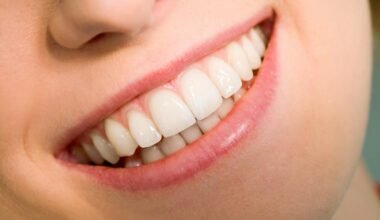The early years are key for shaping how your child’s teeth and jaw develop. Small issues that seem harmless can turn into bigger problems if they go unnoticed. As a parent, knowing what to watch for can make a big difference.
This article covers the early signs that something might be off with your child’s dental development. These aren’t always things your child will mention. In fact, many of them go unnoticed until a dentist or orthodontist points them out. But with the right information, you can catch these clues yourself and take action sooner.
Whether you’re in Connecticut or anywhere else, this guide gives you real, useful ways to stay ahead of dental issues—and support your child’s long-term health.
Thumb-Sucking That Doesn’t Stop
Thumb-sucking is normal for babies and toddlers. It helps them feel calm and secure. But once a child turns four, the habit can start to affect how their mouth grows. When thumb-sucking continues past preschool, it puts pressure on the upper front teeth and can cause them to push forward.
This can also affect the roof of the mouth and how the jaw forms. Over time, your child may develop an open bite or other alignment issues. If you notice that thumb-sucking is still part of your child’s daily routine after age four or five, it’s time to talk with a dentist or orthodontist. There are simple ways to help your child break the habit—and prevent the need for more involved treatment later.
Practices like CT Braces specialize in early intervention for children with oral habits that affect dental development. Their team not only helps correct existing issues but also works closely with families to guide kids toward healthier habits—all in a setting that’s friendly, supportive, and built for young patients.
Mouth Breathing or Snoring at Night
Breathing through the mouth instead of the nose might not seem like a big deal, but it can actually change the way your child’s face and jaw grow. Mouth breathing can lead to a narrow upper jaw, misaligned teeth, and a longer face shape over time.
Snoring or noisy breathing while sleeping are also signs to watch for. These could point to enlarged tonsils or adenoids, which can make nose breathing harder. During the day, mouth breathing may also show up as dry lips, drooling, or a slightly open mouth posture.
If you see these signs, don’t ignore them. Talk to a pediatrician or dentist. They might suggest a sleep study or refer you to an orthodontist who can help guide the jaw’s growth in a healthier direction.
Crowded Baby Teeth Early On
Many parents assume that baby teeth don’t matter because they fall out anyway. But the way baby teeth are spaced can predict future alignment issues. If your child’s baby teeth are already tightly packed together, there might not be enough space for the larger permanent teeth to come in properly.
Ideally, there should be a little bit of space between baby teeth. That extra room helps adult teeth slide into place with fewer issues. If you notice crowding early on, it’s worth bringing it up at your child’s next dental visit. They might recommend an early orthodontic check, which can help prevent more serious alignment problems later.
Chewing Takes Too Long or Looks Awkward
Eating should be easy and painless. If your child takes a long time to chew food, or seems to move their jaw in an uneven way, this may point to bite problems. Some children may avoid harder foods or chew only on one side. Others may take small bites and chew carefully to avoid discomfort.
These habits can develop when teeth don’t meet correctly. Misaligned bites, called malocclusions, can cause stress on certain parts of the jaw. They can also lead to uneven tooth wear and long-term joint issues. If you notice your child struggling during meals or chewing in a strange way, it’s worth asking your dentist about it. They may suggest an orthodontic evaluation.
Speech Sounds Don’t Come Out Right
Some dental issues affect how your child talks. If certain sounds like “s,” “sh,” or “th” come out slushy or unclear, it could be more than a speech delay. Gaps between teeth or a misaligned bite can make it hard for the tongue to move the right way.
In some cases, a child may develop habits like tongue-thrusting, where the tongue pushes against the front teeth during speaking. This can make existing problems worse. A speech therapist can help, but it’s also important to correct any underlying dental issues. An orthodontist can work with other professionals to support both speech and tooth alignment.
Biting the Cheeks or Lips Often
It’s not unusual for a child to bite the inside of their cheek once in a while. But if it happens often, there may be a reason. Teeth that don’t align well can push soft tissues into the way when chewing or speaking. This leads to repeated injuries, sore spots, or even scarring.
Watch for signs like your child pulling their lip into their mouth, chewing on it, or mentioning that it hurts. You may also notice red or irritated areas inside their cheeks. These are all signs that the teeth might be misaligned. Bringing this up at your child’s next dental visit can help catch the issue before it gets worse.
Keeping an eye on your child’s teeth as they grow is one of the best ways to protect their health. Small signs—like how they chew, talk, or sleep—can point to issues that are easier to fix when caught early. You don’t need to be a dental expert to spot red flags. Just knowing what to look for puts you in a stronger position to help your child.
If something doesn’t seem right, trust your instincts and ask your dentist. Getting a professional opinion early can prevent bigger treatments later. With good habits, early support, and expert care, your child can enjoy a healthier, happier smile for years to come.



